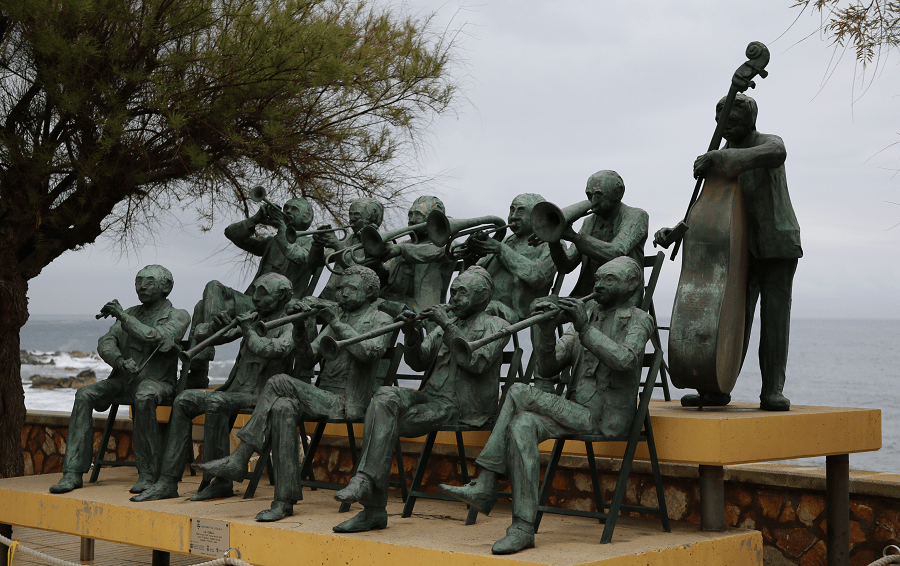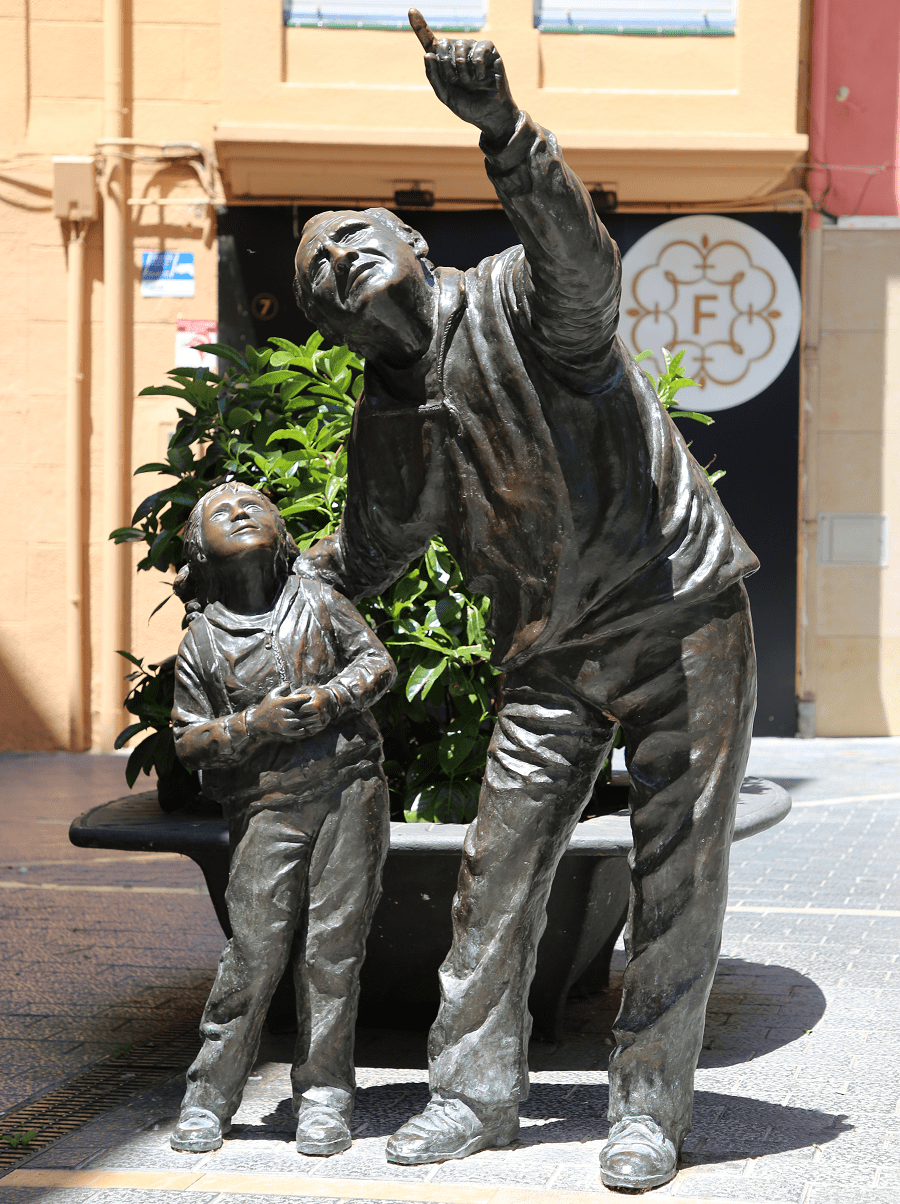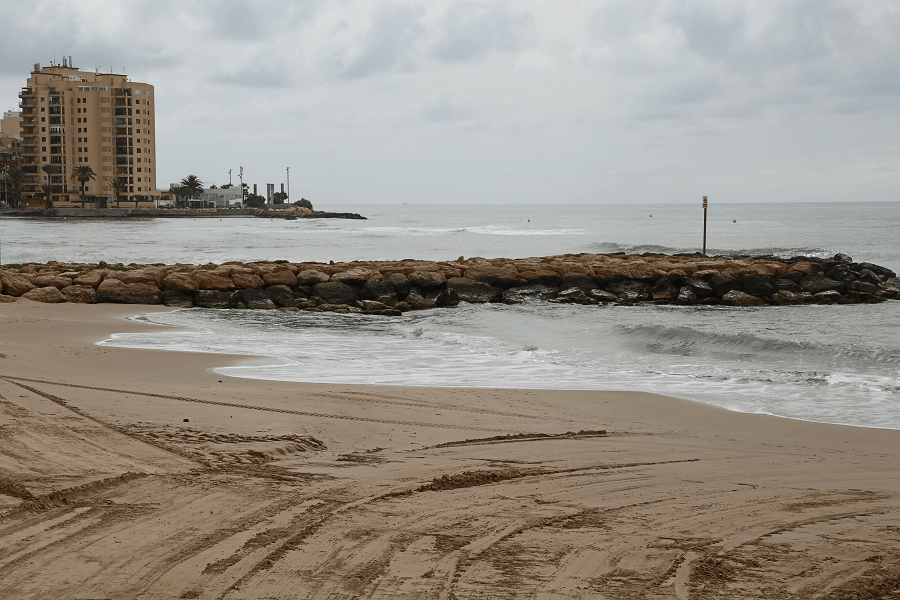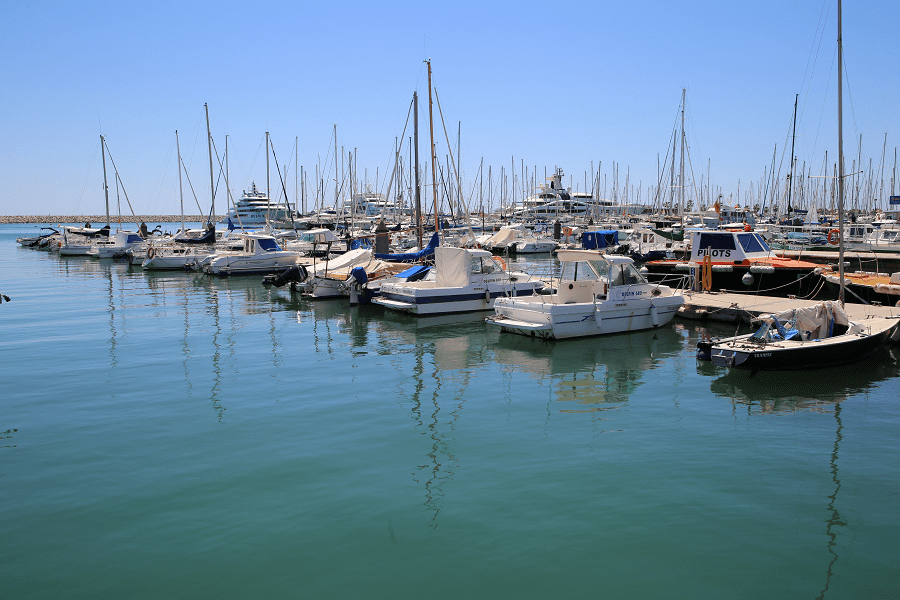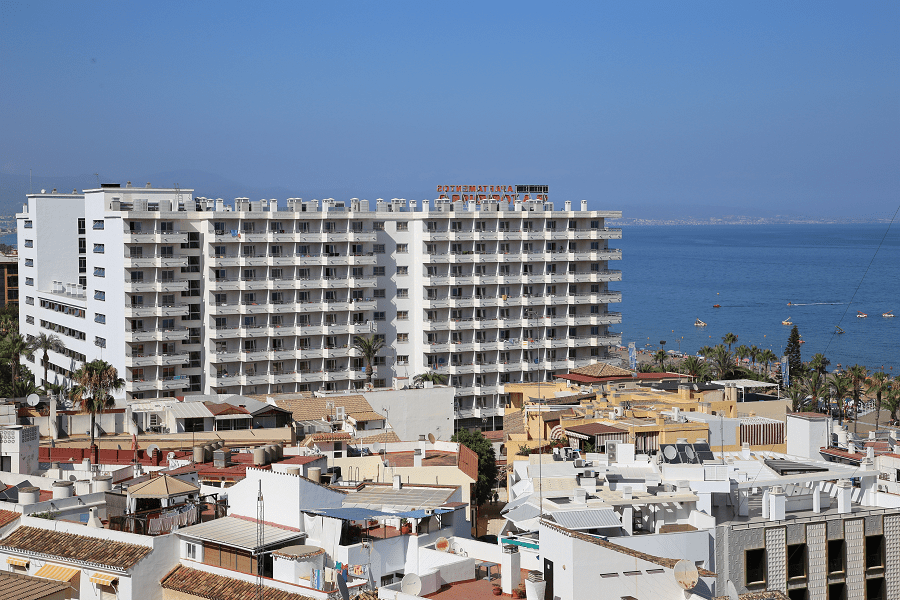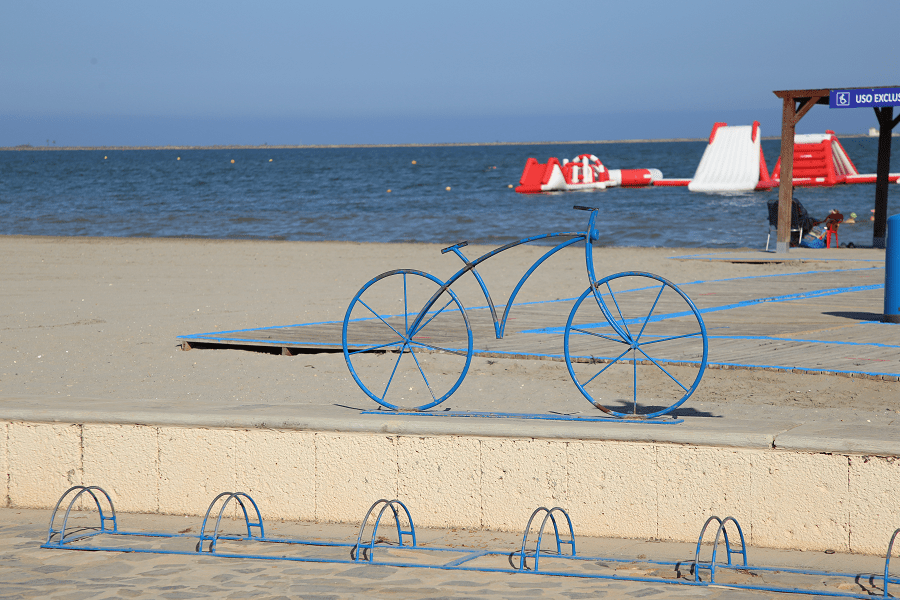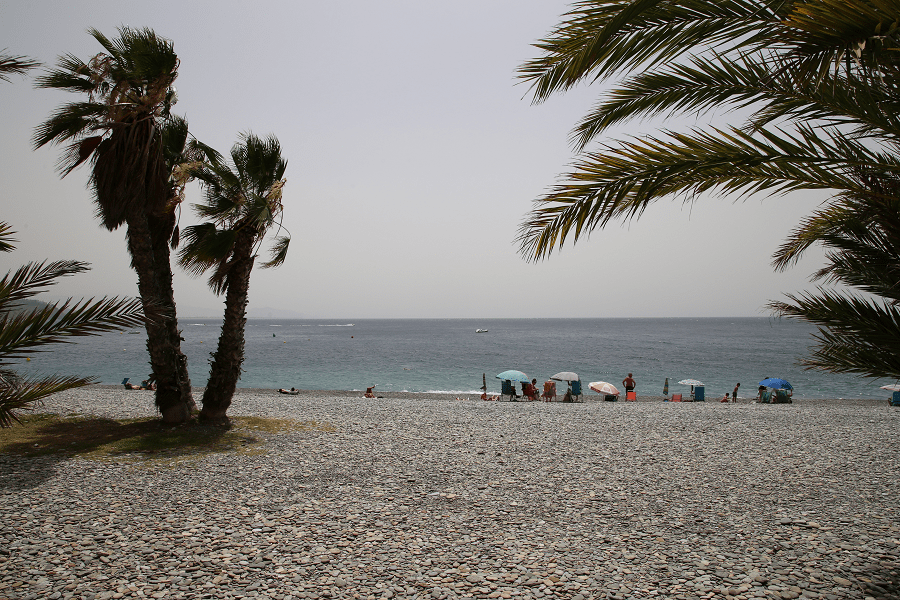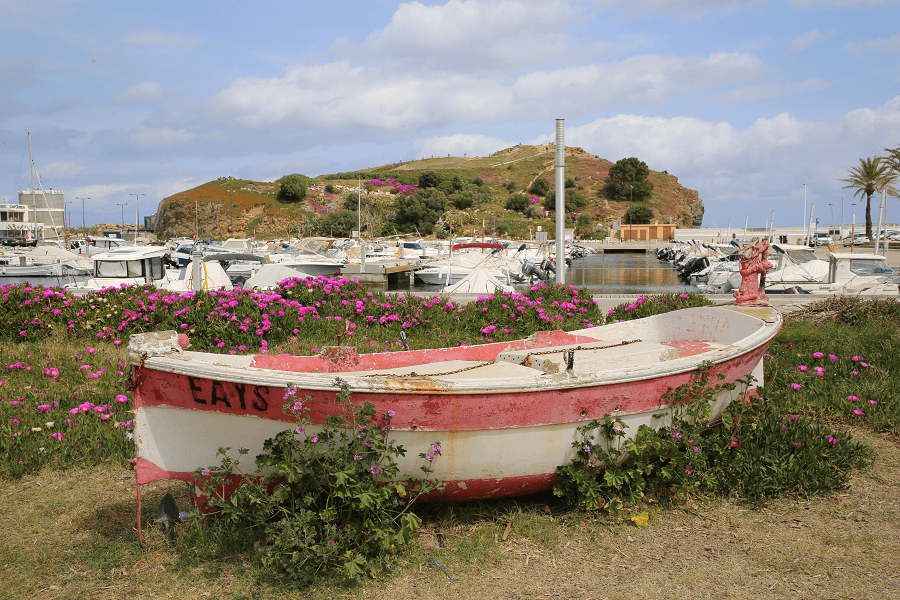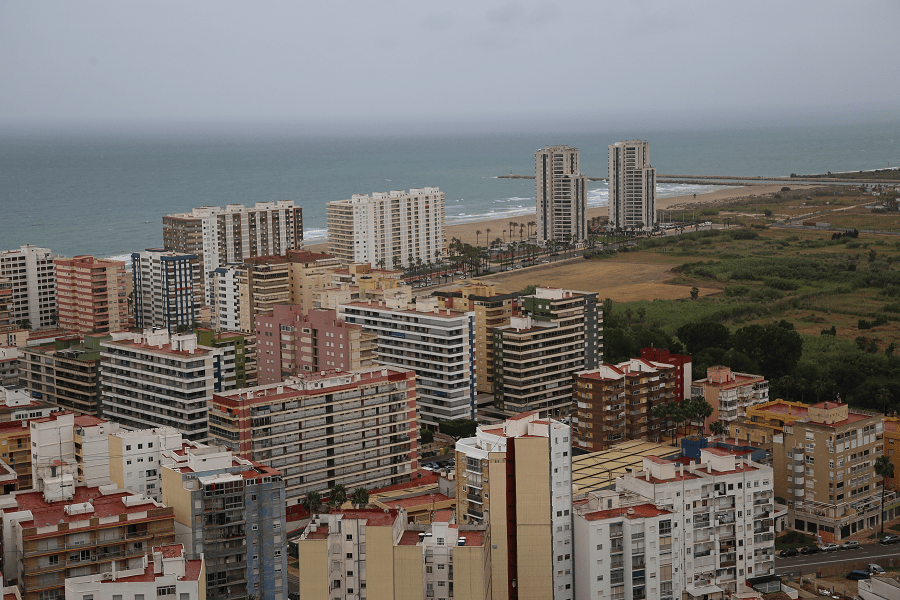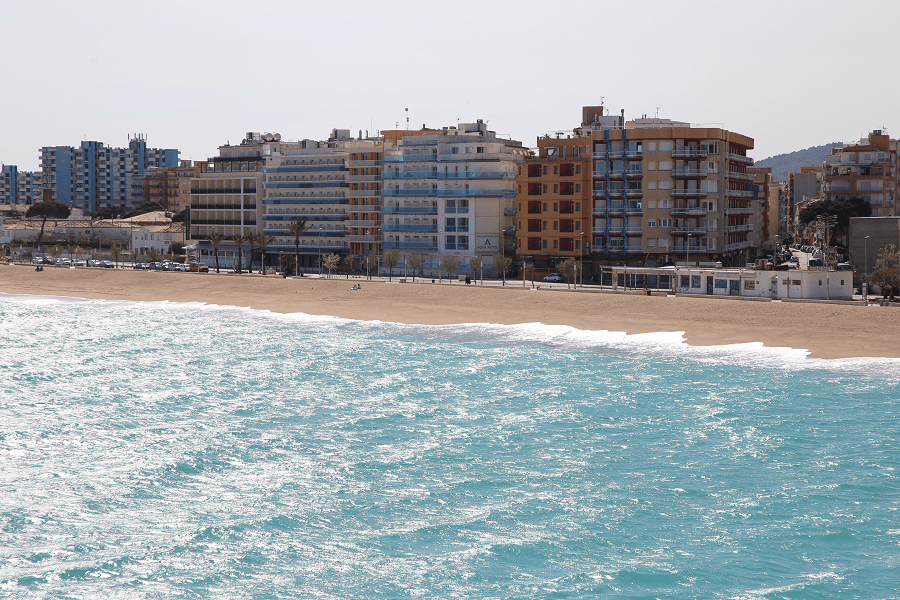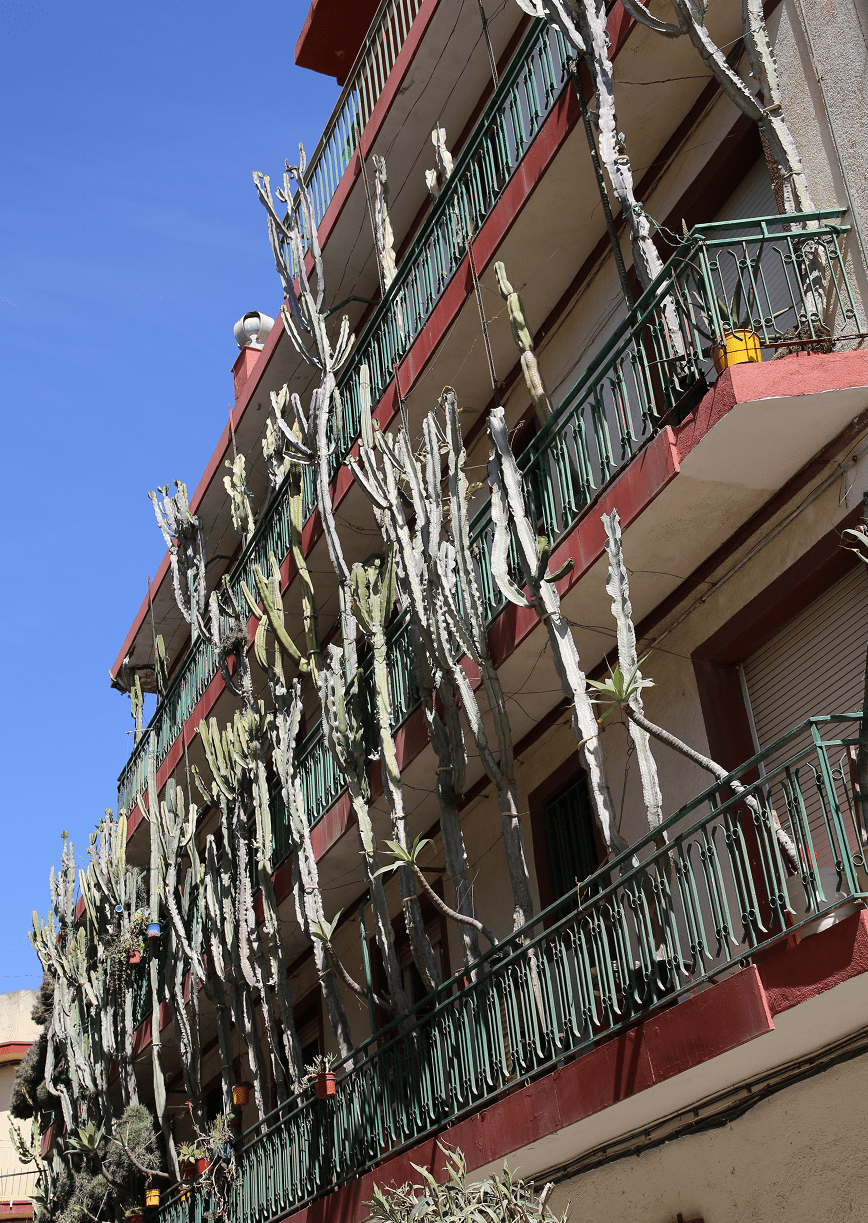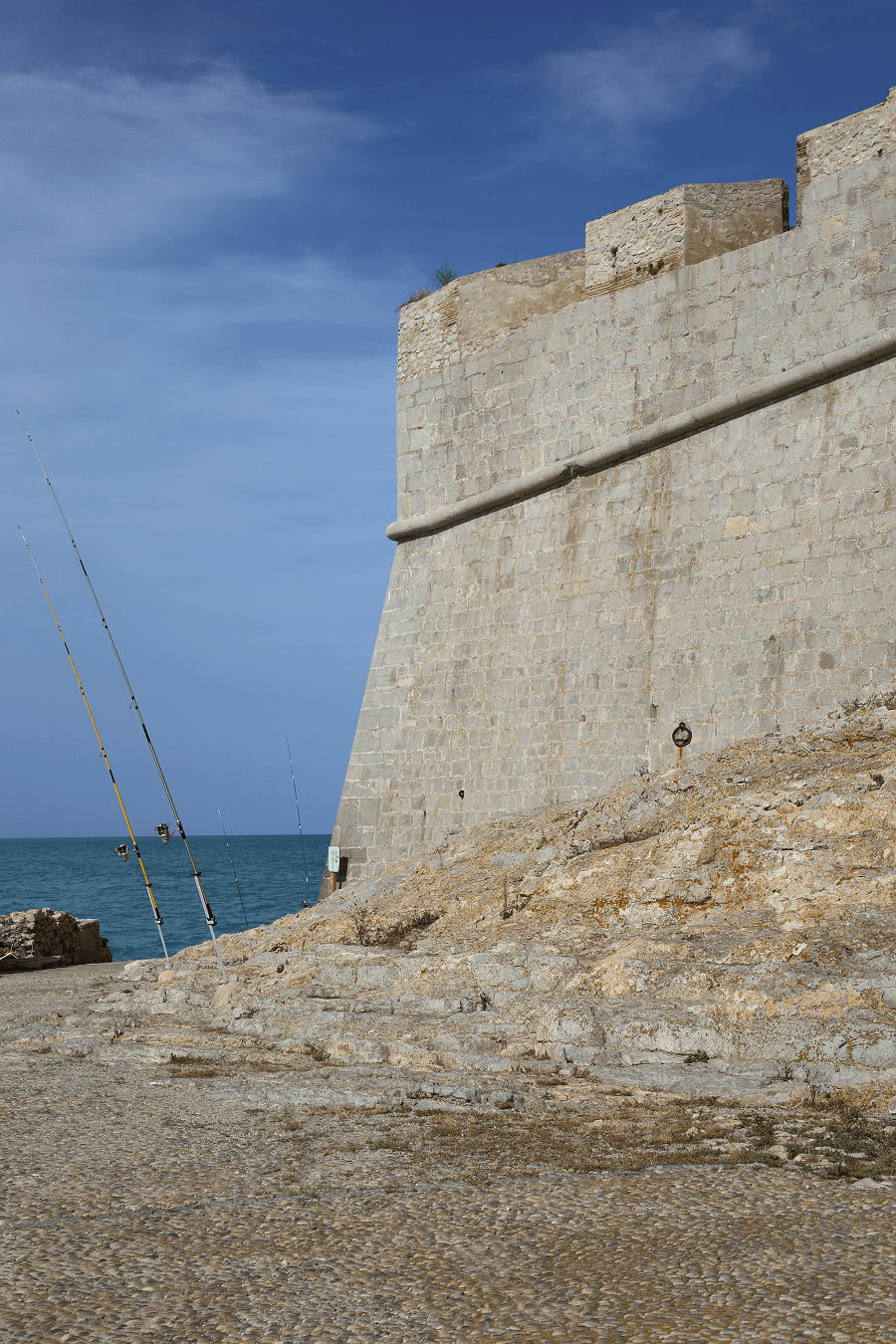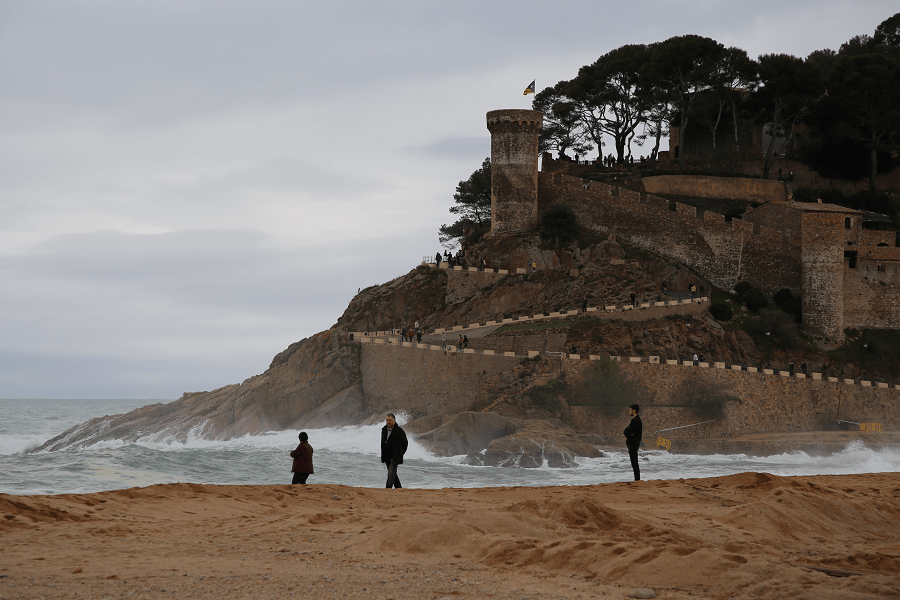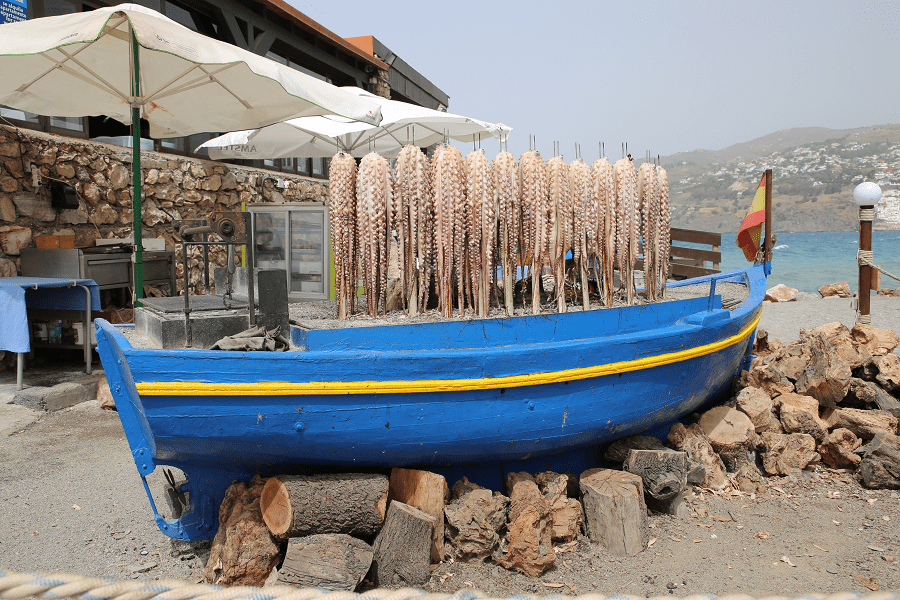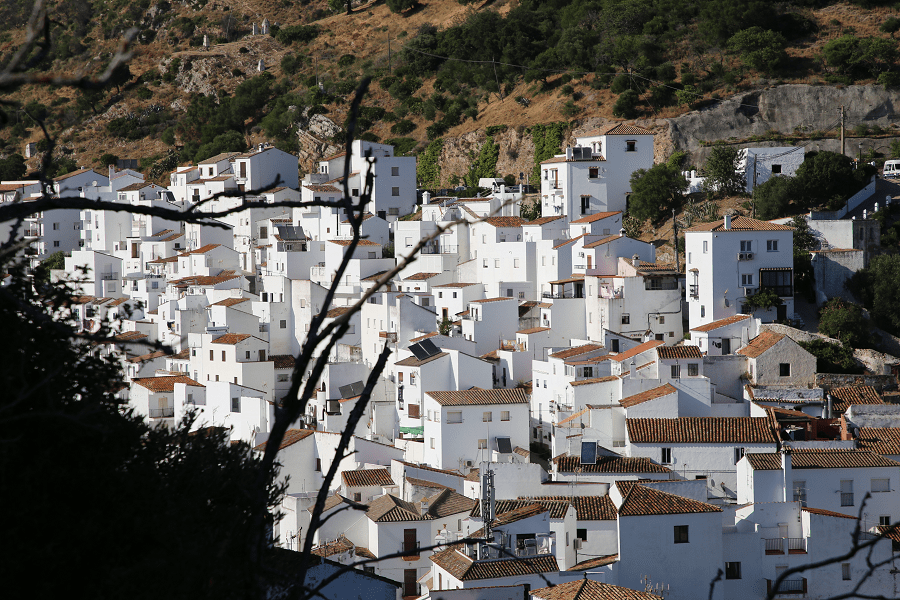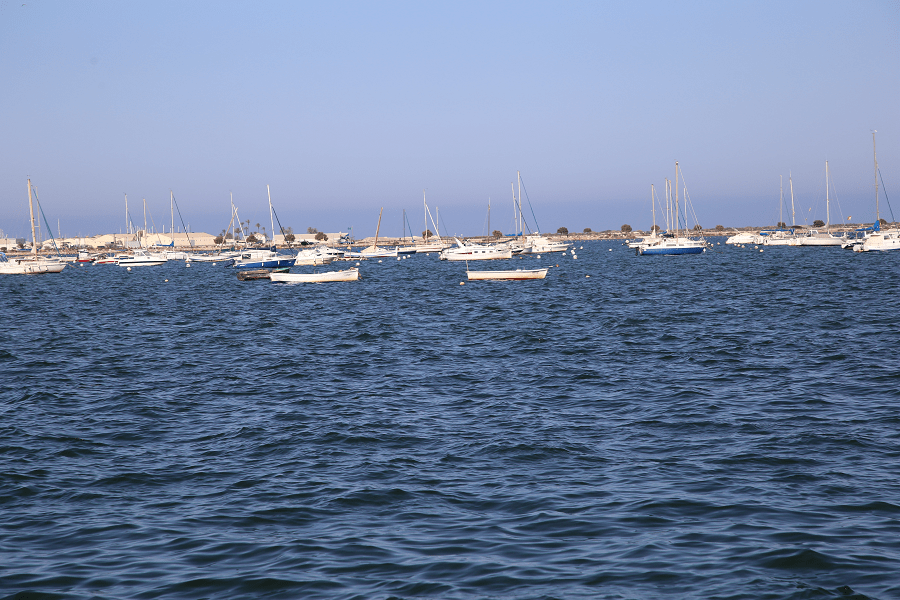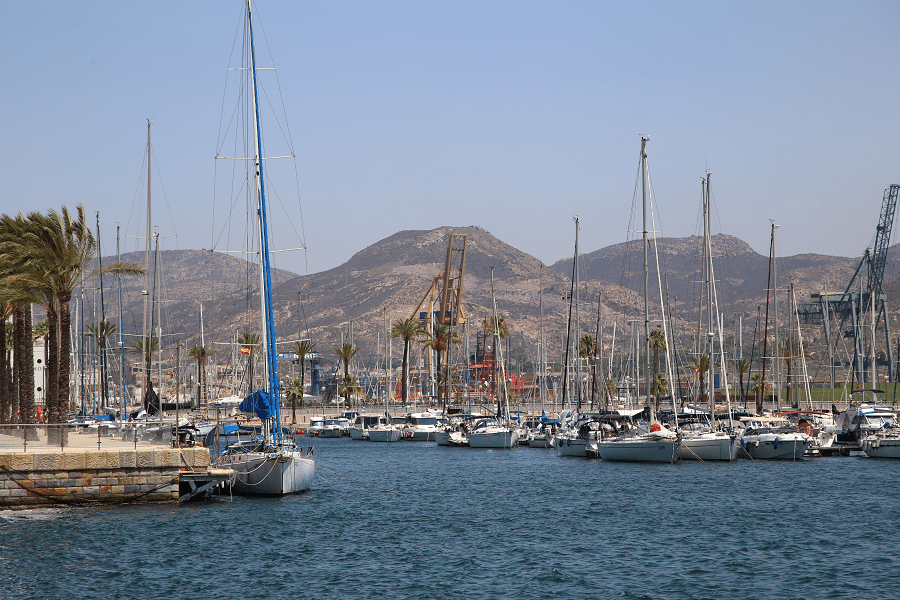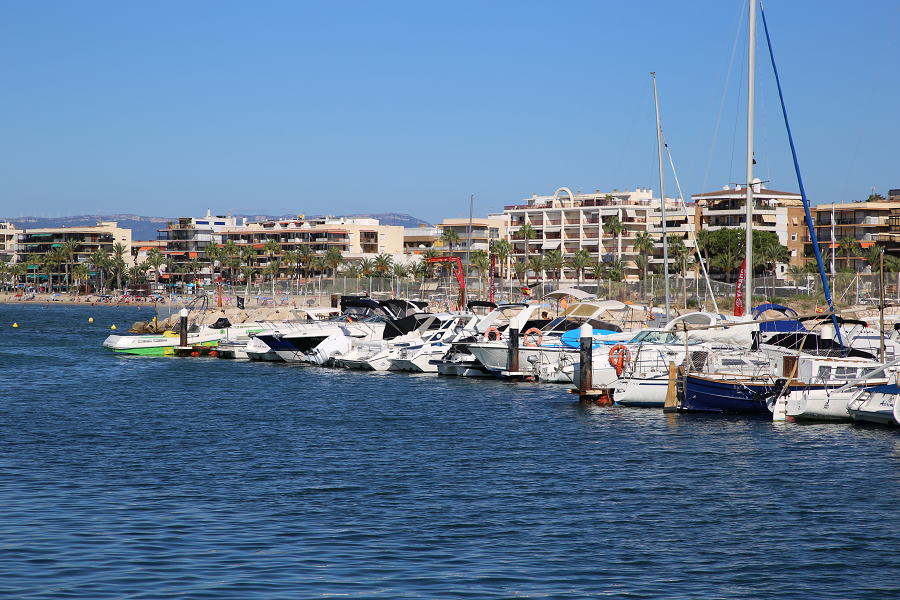Main regions (from south to north, 92 objects on 12 coasts)
Costa del Sol
The Costa del Sol (“Sun Coast”) is a region in the south of Spain in the autonomous community of Andalusia, comprising the coastal towns and communities along the coastline of the Province of Málaga and the eastern part of Campo de Gibraltar in Cádiz.
Formerly made up only of a series of small fishing settlements, today the region is a world-renowned tourist destination. The Costa del Sol is situated between two lesser known coastal regions, the Costa de la Luz (Atlantic ocean) and the Costa Tropical.
The region has no official limit, but it is generally accepted that the Costa del Sol stretches from the municipality of La Línea de la Concepción in the west to Nerja in the east, spanning around 150 kilometers of coastline.
The region was a relatively prosperous commercial and industrial center for much of the 19th century. The tourist boom in the area began in the 1920s with the opening of the Baños del Carmen in Málaga and a golf course in Torremolinos.
Main resorts:
Costa Tropical
The Costa Tropical is a comarca in southern Spain, corresponding to the Mediterranean coastline of the province of Granada, Andalusia. It is also but less frequently called the Costa de Granada or Costa Granadina. This territory limits to the east with the region of Poniente Almeriense, in Almería (Costa de Almería); to the west with the Axarquía – Costa del Sol, in Malaga; to the north with Alhama, the Lecrín Valley and the Alpujarra Granadina; and to the south it has access to the Mediterranean Sea.
It is made up of 18 municipalities, of which the most populated and extensive is Motril; on the contrary, the municipality with the least number of inhabitants is Lentegí, and the one with the smallest area is Torrenueva Costa. Its traditional and historical capital is the city of Motril.
The Mediterranean climate prevails on the Costa Granadina. The Sierra Nevada mountain range, with the highest heights of the Iberian Peninsula, protects this coastline from the cold north winds and, due to the Föhn effect, creates a subtropical microclimate in localized areas, with 320 days of sunshine a year and an average temperature in around 20 ° C.
Main resorts:
Costa de Almería
The Costa de Almería is a coastal region of Spain consisting of the coastal municipalities of the province of Almería, in the autonomous community of Andalusia, Spain.
The region extends 217 kilometres and includes 13 municipalities, from San Juan De Los Terreros on the border with the community of Murcia to Adra on the border with the province of Granada.
It is situated between the Costa Cálida (Region of Murcia) and the Costa Tropical (Province of Granada).
The highlight of this coast is its contrasts, along with extensive sandy beaches, small coves, arid deserts, green oases, plantations and lush forests, great mountain ranges, great plains. Another feature is its clear and bright sky. Almería enjoys more than 3,000 hours of sunshine a year. Its climate is subtropical, Mediterranean, warm and dry. The average annual temperature is 18 / 19º C, and that of its waters in winter is warmer than that of the air, making it an optimal destination throughout the year.
Main resorts:
Costa Cálida
The Costa Cálida is the tourist name for the approximately 250 km of Mediterranean coastline in the Region of Murcia, Spain. This region has a microclimate that is characterized by an average annual temperature of 18 degrees and a relative degree of aridity, with average rainfall of less than 340 mm and more than 3,000 hours of sunshine per year.
It is located between the Costa Blanca (Province of Alicante) and the Costa de Almería (Community of Andalucia).
The Costa Cálida stretches from El Mojón in the north, near the province of Alicante, to the Cuatro Calas in Águilas in the south.
The northern end of this coast includes the Mar Menor, a coastal saltwater lagoon that, at about 170 km², is the largest in Europe. The Mar Menor is separated from the Mediterranean by a 22 km stretch of sand called La Manga, on which most of the region’s tourist development has been built.
Main resorts:
Costa Blanca
The Costa Blanca is the tourist name given to the Mediterranean coast that bathes the province of Alicante, in southeastern Spain (Valencian Community). It ranges from the municipality of Denia in the north, to that of Pilar de la Horadada, in the south. It is made up of 244 km of beaches, coves and cliffs. It limits to the north with the Costa de Valencia and to the south with the Costa Cálida (Region of Murcia).
The towns located on the Costa Blanca (from north to south) are: Denia, Jávea, Benitachell, Teulada-Moraira, Benisa, Calp, Altea, Alfaz del Pi, Benidorm, Finestrat, Villajoyosa, Campello, Alicante, Elche, Santa Pola, Guardamar del Segura, Torrevieja, Orihuela Costa and Pilar de la Horadada.
Its capitals par excellence are the cities of Benidorm and Torrevieja, since these municipalities are the great tourist focus of the Costa Blanca and the entire Levantine coastline.
Main resorts:
Elche (inland)
Costa de Valencia
Costa de Valencia is the coastal section that belongs to the province of Valencia, forming the Gulf of Valencia, an inlet of the Balearic Sea (western Mediterranean), on the eastern coasts of Spain. It borders the other two coasts of the Valencian Community, to the north with the Costa del Azahar (province of Castellón) and to the south with the Costa Blanca (province of Alicante).
The coastline that comprises the 109-kilometer coast of Valencia has very few geographical features, the most notable being the Cabo del Faro de Cullera, since the coast is generally low and sandy, which favors the presence of abundant sandy areas, such as the from Cullera, Daimuz, Gandía, Miramar, Canet de Berenguer, Sueca and the city of Valencia itself. Swampy areas are also abundant (especially in the central plain) such as the Gandía and Oliva lagoons, the most important being the Valencia lagoon. The marshes such as those of El Puig and Jaraco also stand out.
Main resorts:
Costa del Azahar
Costa del Azahar (English “Orange Blossom Coast”) or Costa dels Tarongers (English: Orange Tree Coast) is the name for the coast of the province of Castellón in Spain, Valencian Community.
The Costa Azahar is the tourist name given to the coast of the Balearic Sea, in the Mediterranean, consisting of about 120 km of beaches and coves. Its name comes from the orange blossom, the province’s quintessential crop. It limits to the north with the Costa Daurada (province of Tarragona) and to the south with the Costa de Valencia (Province of Valencia).
The towns located on the Costa del Azahar are: Vinaroz (the northernmost resort), Benicarló, Peñíscola, Alcalá de Chivert, Torreblanca, Cabanes coast, Oropesa del Mar, Benicasim, Castellón de la Plana, Almazora, Burriana, Nules, Moncófar, Chilches, La Llosa and Almenara (the southernmost resort, about 30 km north of Valencia).
Main resorts:
Costa Daurada
The Costa Daurada, washed by the Balearic Sea, this coast is known in a tourist environment as the Costa Daurada, which means “golden coast” in Spanish. The region received such a name not without purpose, because the fine yellow sand on the resort area beaches sparkles in the sun, like gold ore. The Costa Daurada Catalan coast is very popular among foreign tourists and Spaniards.
Borders with Costa del Garraf in the North and Costa del Azahar in the South.
This is facilitated by the protection of the coast by low mountains from cold air masses, a favorable climate, developed infrastructure, and picturesque landscapes. Most coastal beaches have been awarded the prestigious Blue Flag Award.
Main resorts:
Costa del Garraf
Costa del Garraf is the tourist name of the Catalan coast, which corresponds to the coast of Baix Llobregat, Garraf County. It is bounded in the north of the Costa de Barcelona and in the south of the Costa Daurada. It runs from the mouth of the Llobregat River to the mouth of the Foix.
The coast is dominated by the mountain range del Garraf in its central part, which reaches the sea and is softened by sandy and very open beaches to the north, to the Llobregat delta, where the facilities of Barcelona airport are located, and to the south to the cities of Sitges, Vilanova i la Geltrú and Cubelles.
The lively beaches and coves of the Costa del Garraf are just one reason to visit the area. The wide variety of its lands (Garraf, Baix Llobregat districts) allows you to enjoy natural spaces such as Garraf Park, villages with a long tradition of tourism, such as Sitges or Vilanova i la Geltrú, heritage of all eras (Gothic, industrial and modernist styles). Here you can also taste delicious local dishes accompanied by Penedès wines and cava.
Main resorts:
Costa de Barcelona
Costa de Barcelona is the coast of Barcelona, that covers its municipality and San Adria del Besos. Its limits stretch from the mouth of the Besos River to Llobregat. It is bounded in the north of the Costa del Maresme and in the south of the Costa del Garraf.
It is an entirely urban coastline, consisting of two different parts: from Besos to Barceloneta, with beaches for public activities and with all kinds of services, and from Barceloneta to Llobregat, occupied by the facilities of the port of Barcelona.
Believe it or not, until 1992 there were no beaches in Barcelona! And they appeared only thanks to the Barcelona 1992 Olympics, when the city authorities decided to give Barcelona a worthy appearance of an international “Beach city”. Today, there are nine beaches and one water center within the city.
Costa del Maresme
The Costa del Maresme is a stretch of the Catalan coastline that coincides with the coast of the Maresme region and covers a total of 16 municipalities from Montgat to the Tordera estuary. It is bordered in the north by the Costa Brava and in the south by the Costa de Barcelona.
It is a coastal strip stretching between the Mediterranean Sea and the coastal ridge that protects it from the northerly winds. The Maresme Coast is characterized by extensive beaches and golden sands, fishing villages and areas with a long tradition of tourism. Characterized by a mild climate and a Mediterranean landscape, it is a residential and tourist area of the TOP level, which has become the home of many Barcelonians in recent decades.
Main resorts (from south to north):
Costa Brava
The Costa Brava is a wide strip of the Mediterranean coast that geographically occupies the north of Spain.
Costa Brava is located in the northeast of Catalonia (province of Girona), which is part of the Spanish Kingdom. Costa Brava stretches 210 km from the French border to the Blanes resort town. Borders with Costa del Maresme in the south and Mediterranean resorts of France in the north.
Cliffs and rocks interspersed with picturesque bays and coves are often found on the Costa Brava Mediterranean coast in Spain. The landscape is complemented by the greenery of the Pyrenees pine, fir and pine thickets. Nature reserves occupy 30% of the Costa Brava. Cap de Creus is a natural park with an area of 140 square meters. km, which is located in the eastern part of the Iberian Peninsula and has sea and land zones. The Costa Brava air is saturated with pine aroma and the Mediterranean Sea smell.
Main resorts:
See here best sea and ocean resorts of France and Spain (223 objects)



